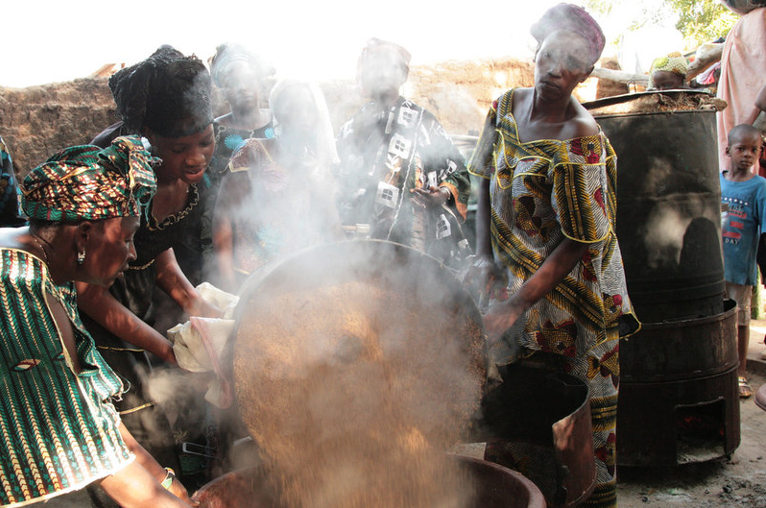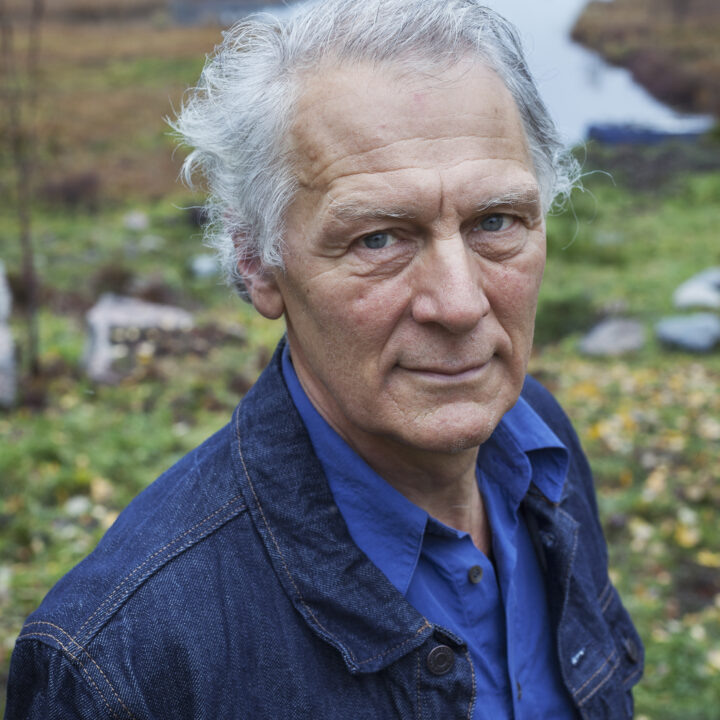Recently, I wrote an article about how difficult it is to survive as a commercial smallholder and floated some ideas of why that is and what can be done about it. I want to follow up with two articles. This one is about the production capacity of small farms and the next one will be on labor productivity and its implications for the space of consumption for small holder farmers and its capacity to generate surplus labor for other societal purposes.
I often see the claim that peasants/small farms/small holders/family farms produce seventy percent of all the food in the world. The 70 figure originates from a report by the ETC Groups in 2009, Who Will Feed Us? Questions for the Food and Climate Crises. The original has been revised and the current version from 2017 states that the ”ETC Group estimates about 70% of the population – 4.5–5.5 billion of the world’s 7.5 billion people – depend on the Peasant Food Web for most or all of their food”.
| Geoffrey, a successfull small holder in Zambia, photo:Gunnar Rundgren |
While I am a small farmer myself and very sympathetic to the future of small farms in a similar way as the ETC group, I think it is important to have the facts straight. To begin with, the poorest 70% consume a lot less than 70% of the food in the world, as people in the richer countries, who mainly depend on the industrial food chain consume a lot more food per capita. Notably, the ETC report says that 70% of the population depend on the peasant food web for most or all of their food. This is not at all the same as that peasants produce 70% of the food as ”to depend on” doesn’t mean that all their foods come from this food web. Many of the poorest people buy salt, sugar, vegetable oil and other commodities which are mainly from the industrial food web. In addition many small farms raise chicken, pigs or have a dairy goat or cow for which they buy some commercial feed, which means that the product from these animals are not only from the Peasant Food Web.
There can be put several question marks about some of the categories of people which are included in the figure of people who ”depend” on the Peasant Food Web. The figure includes 1 billion urban farmers. But there is no billion urban farmers who produce most of their own food. Most urban farmers produce vegetables or small animals, none of them are staple food. ETC claims that 34% of all meat is produced in cities, and even if we accept that figure (which I am quite convinced is grossly exaggerated) it is quite obvious that the feed of the animals are not produced in the cities and most likely that most of the feed has its origin in the industrial food chain. 2.5 billion people are said to get some or most of their food from street vendors and according to ETC those street vendors get most of their food from peasants. I have looked into food chains in many different countries and I believe that the assumption that most street vendors get their food from peasants has no factual basis.
It is very difficult to make the distinction between the Peasant Food Web and the Industrial Food Chain that the ETC make. In many countries there is a continuum of farming systems from small scale food production oriented to self-sufficiency to large scale farms for commodity trading. And there are many peasants engaged primarily in commercial production also of non-food items such as flowers or export crops such as coffee. Many of those buy their food. When I visited small scale palm oil producers on Sumatra 2017, all of them had quit growing their food and bought noodles and canned mackerel.
And there are interdependencies in the webs and chains. Irina Petrovna in the village Peredavik in Kaluga in Russia, which I visited last year, has four cows and she sells the milk products (milk, smetana, butter, yoghurt) directly in the neighborhood. Her cows graze communal land but the hay for the winter comes from the big farm nearby. And it is similar for many of Russia’s 17 million small backyard farms in Russia. This even goes back to Soviet times when it was common that collective farmers also had a smaller private farm and used the resources of the collective for their backyard production.
How much of the world’s food do smallholders produce? by Vincent Ricciardi and colleagues, published in Global Food Security, the researchers estimate that small farms produce “28–31% of total crop production and 30–34% of food supply on 24% of gross agricultural area.” They define small farms as those having less than 2 hectare. In this research, livestock production and fisheries are not included. The selected farm size limit is very small, In Sweden units with less than 2 hectares are not even defined as a farm. Our own farm with around 1 hectare of vegetables and fruits, 8 hectares of arable grassland and 13 hectares of permanent grassland certainly would qualify as a very small farm in this country.
Considering the differing conditions in the world and the difficulties in classification, I don’t think it is possible to get a “correct” figure. Whatever method is used there will be flaws and things to criticize. There is also no need to inflate the figures to prove that small farms can produce sufficient food. The existing situation is an expression of economic conditions and says little about the potential for small farms to produce sufficient food (in a similar way as the extent of organic farms or regenerative farms says anything about the potential of those systems). As the research by Riccardi and colleagues show the production of food per unit of land is rather higher on small farms than on big farms. This is corroborated by research in the USA which shows that yield per hectare also for a staple crop like corn is more or less the same in small farms as in bigger ones.
A historical perspective also helps: In Sweden in 1949 dairy farms produced 5 million tons of milk while the total production today is 2.8 million tons. In 1949 there were 300,000 farms producing milk, with an average of 5 cows per farm; almost all milk was produced on small farms. Today the average dairy farm has around 100 cows, and there are just above 3,000 farms left. Most farms are still called family farms but can’t really be called small farms as we talk about investments of 2-10 million dollars or euro just to keep a few people occupied. The farms of 1949 used considerably less fossil fuels, artificial fertilizers, tractors and imported soy to produce almost twice as much milk. In some regards they were much more efficient than the prevailing production.
The key message is that the potential of small farms for global food production is determined by economic conditions rather than biological, ecological or agronomic limitations.
Teaser photo credit: Processing of local rice by a women’s cooperative in Dioro, Mali. Photo: FAO/Michela Paganini






